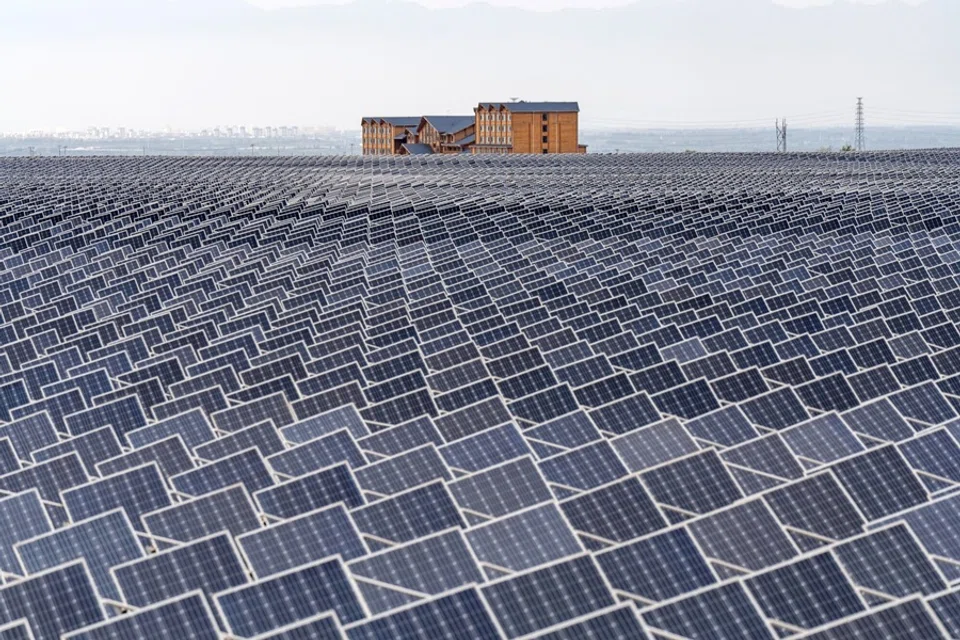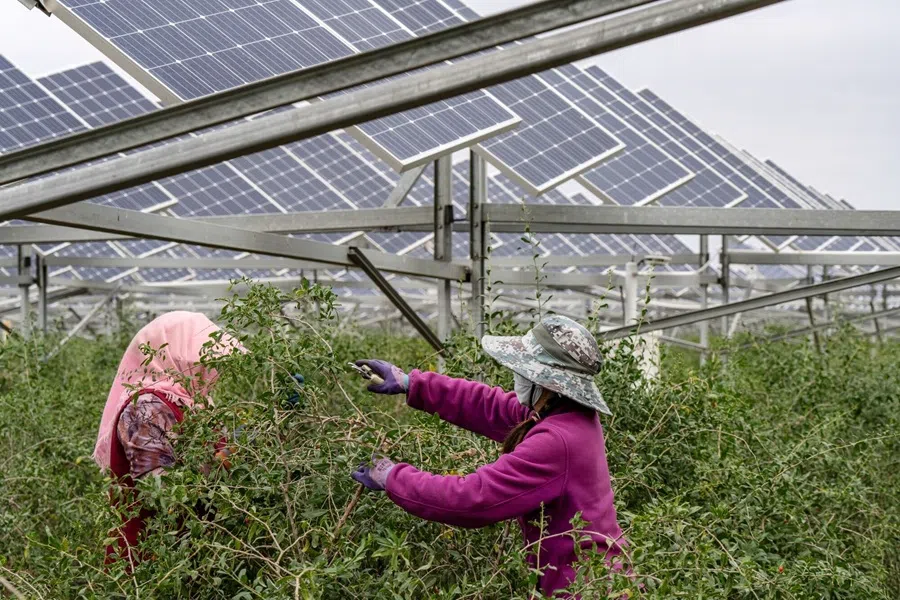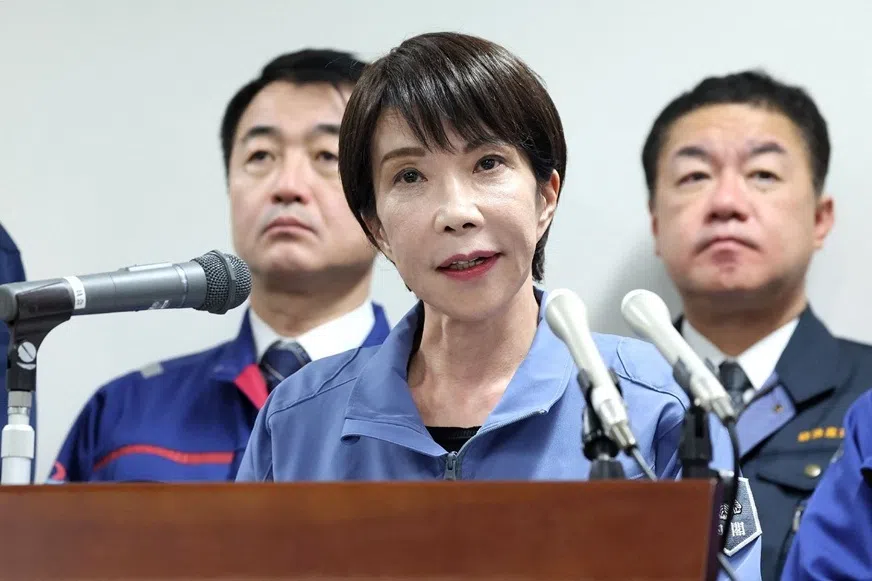Sunburnt: Why China’s solar success became its own worst enemy
China’s rapid rise as a solar powerhouse fuels global growth but exposes deep cracks — overcapacity, trade tensions and the limits of state-driven industrial policy, says EAI deputy director Chen Gang.

China’s meteoric rise as the world’s solar powerhouse has been both a triumph and a cautionary tale. The country’s journey from a latecomer to a global leader in solar panel manufacturing is emblematic of its state capitalism model, which has successfully marshalled resources, policy and industrial capacity to achieve rapid growth. Yet, the solar sector plunged into heavy losses in 2024-25 after a sustained price war and capacity glut, with major module and cell makers cutting their workforces when utilisation rates slid well below healthy levels.
As the recent losses reveal, the very mechanisms that fuelled China’s solar photovoltaics (PV) ascent have also exposed structural vulnerabilities, particularly the dangers of “involution” (neijuan in Chinese) — a cycle of self-defeating competition and overcapacity.
Rapid supply chain domination
China’s solar industry was built on the back of aggressive state intervention. In the early 2000s, national policies incentivised renewables, with the Renewable Energy Law (2005) and the Medium- and Long-Term Development Plan for Renewable Energy (2007) laying the legal groundwork for massive subsidies.
These subsidies ranged from cheap land and tax rebates to research funds and low-interest loans, often mandated by local governments to support domestic champions, whose bank loans had ballooned largely due to municipal mandates for state-owned banks to provide financing.
Following the 2008 global financial crisis, the centre of solar PV production shifted from the US to Japan, Europe and eventually China, which quadrupled its polysilicon solar panel manufacturing capacity between 2009 and 2011.
China’s rapidly expanding production capacity has driven down the global price of solar panels by more than 80%.
This mercantile model, which prioritises industrial capacity expansion and trade surpluses, is not without risks. Farsighted researchers over a decade ago warned of overcapacity and over-subsidy, as production facilities mushroomed and both domestic and international markets became saturated.
A disconnect between supply-side industrial policy and demand-side risk assessment led to a mismatch: while manufacturing capacity expanded rapidly, both international and domestic demand lagged amid tariff wars and a broader economic slowdown.

China is the dominant force in solar equipment production, accounting for over 80% of the global solar manufacturing supply chain. Remarkably, around 97% of the world’s silicon wafers — an essential component for solar cells — are produced in China. These wafers are then exported worldwide for use in solar cell manufacturing.
Approximately 75% of the silicon solar cells used in modules installed in the US are manufactured by Chinese-owned subsidiaries located in Vietnam, Malaysia and Thailand. China’s rapidly expanding production capacity has driven down the global price of solar panels by more than 80%.
Unlocking domestic markets
The outbreak of trade wars and China’s domestic demand downturn forced a reckoning. Chinese manufacturers dramatically expanded capacity during the 2020-23 boom — driven by global demand, generous local incentives and the strategic aim to dominate the full supply chain from polysilicon through modules. That expansion sowed the seeds of trouble: global demand slowed, high tariffs complicated exports, and many firms continued to race for volume by cutting prices.
The government needs to redirect subsidies from the production side to the demand side...
Facing overseas boycotts and internal oversupply, China should begin to pivot from mercantile expansion to a new stage focused on supply-demand balance. The government needs to redirect subsidies from the production side to the demand side, aiming to reduce over-competition among manufacturers and achieve non-mercantile goals like avoiding trade frictions and protecting workers’ welfare.

This policy shift may be gradual but significant, as China still holds immense potential for expanding domestic solar panel demand. Generous subsidies for hardware, installation, and soft costs have driven China’s installed cost of solar PV systems to become the second lowest globally — approximately one-third the cost in Russia and Japan, and half that of the US. Only India has lower installation costs.
Feed-in tariffs and other incentives helped solar PV power generation approach grid parity, setting the stage for exponential growth in installed capacity. By the end of 2024, China’s on-grid solar power capacity had reached 887 gigawatts (GW), or about 26.4% of total installed electricity capacity, up from just 3.3 GW, or 0.3% of the total, in 2012.
... production in 2024 exceeded global demand by a large margin, producing persistent downward pressure on prices and margins.
Local governments block solar exits
Involution, a spiralling competition that produces wasteful duplication and depressed returns, has worsened amid weak domestic demand and increased external challenges. The result was a classic “trading price for volume” trap: more panels shipped, but at ever-lower margins and utilisation rates that left factories under-employed. By some accounts, production in 2024 exceeded global demand by a large margin, producing persistent downward pressure on prices and margins.
China’s policymakers are calling manufacturers to avoid “harmful competition”, trying to prevent them from staying in the cycle of “more production, more losses” for too long. But since the industrial ecosystem is highly fractured, and many small and medium producers are backed by local financing and provincial incentives, local authorities resist even when central policymakers worry about aggregate oversupply.
Local governments, which often have a stake in these companies and are protective of local jobs, resist the closure of struggling facilities. This makes it difficult for solar companies to go bankrupt or exit the market, even when they are heavily in debt and facing consistent losses.
The most direct way to end involution is to encourage exits of failing companies and reduce government interventions in the competitive market.

Chinese authorities have recently called on solar PV manufacturers to end cut-throat, below-cost bidding, urging companies to exercise self-discipline to address overcapacity and excessive competition. However, based on past experience with similar efforts in sectors like steel, textiles, real estate, and the digital platform economy, this latest “anti-involution” campaign may yield only short-term results, with its effectiveness likely to diminish over time. The most direct way to end involution is to encourage exits of failing companies and reduce government interventions in the competitive market.
A new economic model is needed
China’s solar losses underscore the broader challenges facing the country’s economic model. After years of supply-side reforms, there is a growing need to shift policy priorities from subsidising producers to stimulating end-user demand. Such a transition would help reduce China’s overreliance on external markets, ease trade tensions and promote domestic consumption and employment — particularly in services rather than manufacturing.
China’s state capitalism model has been both a blessing and a curse. On one hand, it enabled China to leapfrog established industrial pioneers despite lacking competitive knowledge resources, mature capital markets, or economies of scale. Government subsidies artificially altered the country’s factor endowments, allowing it to dominate a capital- and technology-intensive sector where labour costs constitute only a small fraction of total expenses
On the other hand, industry fragmentation and an excess of subsidies created inefficiencies and market distortions. While central and local government interventions helped increase global market share, they also intensified trade tensions and left the industry vulnerable to boom-and-bust cycles.

The challenge of involution became apparent as manufacturers raced to expand capacity without regard for sustainable demand. The government’s response, shifting subsidies toward domestic demand and the service industry, reflects an attempt to break this cycle and foster a more balanced, resilient industry.
Its shift from export-driven mercantilism to a domestic demand-led development model underscores the importance of aligning industrial and energy policies, promoting innovation, and building resilient domestic markets.
China’s solar reset: subsidies to sustainability
China’s experience provides valuable lessons for countries facing challenges related to industrial policy, overcapacity, and sustainable growth. Its shift from export-driven mercantilism to a domestic demand-led development model underscores the importance of aligning industrial and energy policies, promoting innovation, and building resilient domestic markets.
The risks of involution can be mitigated by strategic government intervention that prioritises demand-side support, the service industry and environmental goals. As China continues to fine-tune its approach, the balance between state capitalism and market forces will be crucial in ensuring the long-term viability of its solar industry and broader green transition.
China’s solar sector losses are not simply a tale of industrial overreach; they reflect the complexities of state-driven development, the pitfalls of involution and the challenges of executing strategic policy shifts. Drawing on its experience, China must scale back industrial subsidies, better balance consumption with production, implement measures to ease the effects of global trade tensions and offer targeted support to workers affected by these transitions.



![[Big read] Love is hard to find for millions of rural Chinese men](https://cassette.sphdigital.com.sg/image/thinkchina/16fb62fbcf055b710e38d7679f82264ad682ce8b45542008afeb14d369a94399)
![[Big read] China’s 10 trillion RMB debt clean-up falls short](https://cassette.sphdigital.com.sg/image/thinkchina/d08cfc72b13782693c25f2fcbf886fa7673723efca260881e7086211b082e66c)
